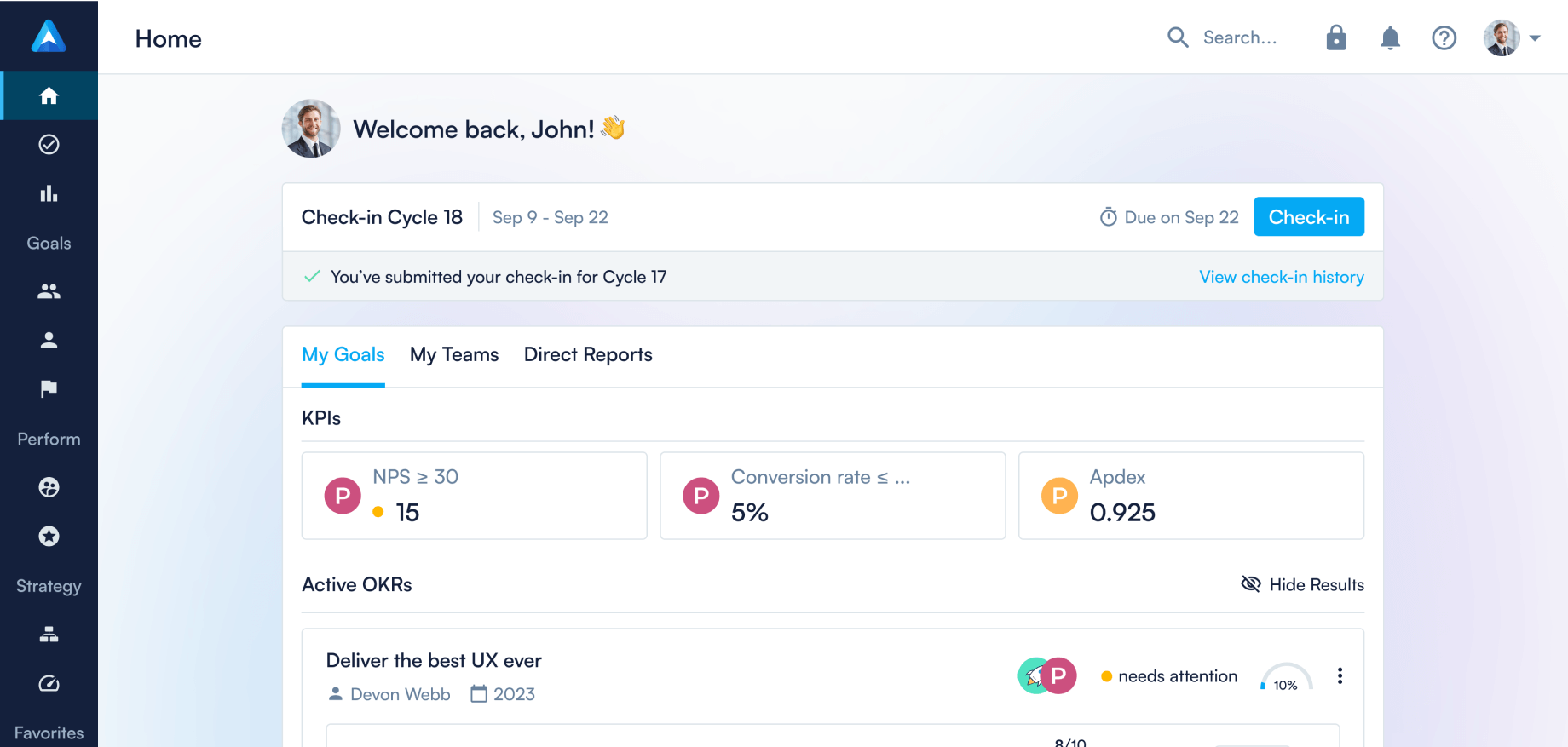
Everything you need to know about Performance Reviews

If you manage a team, chances are you've conducted a performance review at some point. And if you're an employee, you've probably been on the receiving end of one. But what exactly is a performance review? What is its purpose? And how should it be conducted? In this article, we'll answer all the questions you have about performance reviews.
What is a Performance Review?
In the workplace, feedback is critical — in fact, 65% of employees desire more feedback. Your people want to know how they’re performing and how they can further improve. And performance reviews are one of many key tools used to share and receive performance-related feedback.
Performance reviews, also commonly known as performance appraisals, are a great bi-directional meeting for managers and their direct reports to have healthy discussions around performance, goals, career growth, challenges, and more. Such meetings are typically held annually, bi-annually, or quarterly.
What is the purpose of Performance Reviews?
In a nutshell, performance reviews provide employees with constructive feedback on how to improve their performance going forward. In the process, such conversations help employees reach their full potential and contribute effectively to the organization as a whole.
But let’s dig a little deeper. What is the purpose of performance reviews:
For managers
Managers are busy people. And this can mean that the work and accomplishments of their direct reports can often go unnoticed. For that reason, performance reviews are the perfect opportunity for managers to pause and reflect on the performance and growth of their direct reports over a defined period of time.
Managers can use this time to assess the strengths and weaknesses of an individual, evaluate how far the individual has come over the given period of time, acknowledge wins, and even point out areas for improvement. It is encouraged to share honest feedback in order to help employees improve their work going forward. This could also be a chance to identify high performers who may be eligible for raises or promotions.
For employees
Similar to managers, this is an opportunity for employees to reflect on their performance and achievements. They can use this chance to consciously pinpoint areas they feel their strongest in or work they particularly enjoy doing, in order to surface in these meetings and set career growth-related goals for the future.
It’s also a dedicated space for employees to get insight into how they are perceived by their managers and whether or not they are meeting expectations. At the same time managers are able to provide guidance and motivation to employees as they strive to reach their professional and personal goals.
Additionally, the assumption is that performance reviews are only meant for managers to give their direct reports feedback. However, healthy and fruitful performance reviews should be bi-directional — enabling employees with a platform to share constructive feedback with their managers as well.
For the company
Companies that invest in regular employee feedback have 14.9% lower turnover rates than organizations where employees do not receive feedback.
And of course, people performing well will have a direct impact on the company’s success. Performance reviews, therefore, help organizations determine whether or not an employee is meeting the goals and expectations that have been set for them.
How to conduct a Performance Review
Performance reviews are commonly conducted on an annual, bi-annual, or quarterly basis — depending on the company's size, structure, and preference. The process is typically standardized, which means the entire organization goes through its review cycle around the same time. However, some companies may do this differently ie. conduct these meetings annually or quarterly, and at different times depending on team preferences, or perhaps based on an individual’s joining date.
With that being said, the most common way of carrying these meetings out is to have a survey with a set of questions that the manager and/or direct report have to fill out. The responses are then compared and discussed within the scheduled meeting, either in person or virtually.
However, in order to provide valuable and actionable feedback, performance reviews should be conducted in a 360º format. So what is 360º feedback?
360º feedback
360º feedback, as the name implies, is when an employee receives feedback from all angles — not just from their manager, but also from their peers, and in some rare cases customers or key stakeholders (ie. for customer success or account executive roles). This provides a well-rounded view of the employee's performance and sheds light on strengths and work that their manager may not have been aware of.
Let’s take a closer look at the different components of a meaningful performance review.
Self-review
First, and in fact, the most common element of a performance review is for an employee to conduct a self-review. This is when the employee being reviewed fills out a self-assessment prior to the meeting with their manager. The questions in such a form covers areas like performance, goals, role satisfaction, how you feel at work, career aspirations, growth opportunities, etc.
Manager review
The next step is the manager review. The manager typically reviews a similar form as their direct report. This allows managers and direct reports to compare their answers, sparking healthy constructive conversations.
If a peer review is conducted, the manager could bring up points from those answers to discuss as well.
Peer review
Peer reviews are valuable, as your teammates or external stakeholders may interact with you differently and in various areas. Getting their perspective on your performance is key for your manager to get a full spectrum view of where you are.
Typically, you can nominate one or more colleagues or external reviewers to review your performance, and your manager may need to approve these selections. Peers should be provided with a standardized form with questions in order for it to be easy to compare responses during your meeting.
Upward review
An upward review provides employees and direct reports with a voice, enabling them to provide their feedback up the corporate ladder. This could mean sharing feedback about your own manager or even the company as a whole. This could be done anonymously, during a dedicated meeting, or within the performance review itself.
Where to conduct a performance review
Where you conduct performance reviews can be dependent on your company’s needs. Some companies use digital documents (Google Docs, Google Forms, Microsoft Forms, Microsoft Word, etc.) to conduct their performance reviews. These options can be good if you’re small and just beginning to implement a feedback culture. However, they quickly become unmanageable.
For that reason, software exists to centralize these meetings, standardize the performance review process across the organization, and ensure they take place at the right time.
At Perdoo we’ve introduced Performance Reviews, as we believe there’s value in bringing the 3 key building blocks of a business’s success — strategy, goals (OKRs & KPIs), and people — into one tool. In Perdoo, you can schedule Performance Reviews with your direct reports, tailor the form to best fit your company and people’s needs, and have all the context — direct reports goals they lead and recognition they’ve received — to support their performance-related discussions.
Curious to see what Performance Reviews look like and work in Perdoo? Log in to our pre-populated demo account here.
To conclude...
Performance reviews are an important part of managing any team and essentially ensuring your people feel and do well at work. They provide employees with honest feedback about their work and allow managers to identify areas where improvements need to be made.
FAQ








